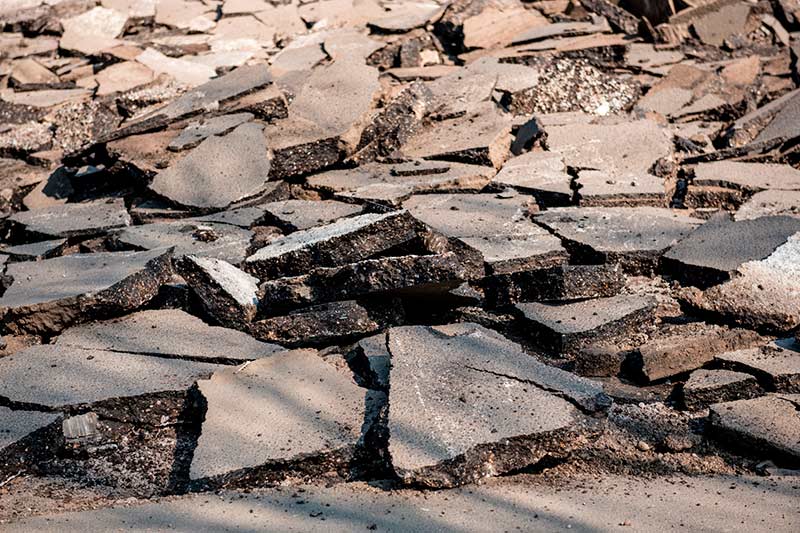Asphalt Demolition and Excavation
Differentiating Asphalt Demolition and Excavation

Asphalt Demolition and Excavation by M and K Enterprises.
Definition:
Asphalt demolition entails breaking down and removing damaged asphalt using specialized machinery, typically applied when existing asphalt is beyond repair and needs replacement. In contrast, excavation involves removing soil or ground to establish a level and stable surface for new asphalt installation. It is employed when the existing surface is unstable or requires grading before laying new asphalt.
Purpose:
The primary distinction lies in their purpose. Asphalt demolition removes damaged asphalt surfaces to make way for new installations, whereas excavation prepares the ground for asphalt by leveling and stabilizing the surface.
Equipment Used:
Demolition necessitates heavy machinery such as milling machines, excavators, backhoes, and jackhammers to break down and remove damaged asphalt. Excavation employs graders, skid steers, and excavators to remove soil and create a level surface.
Steps Involved:
During asphalt demolition, the process typically involves inspecting the damaged surface, obtaining necessary permits and utility markings identifying existing services such as power and water lines, and using heavy machinery to remove the damaged asphalt. Excavation, on the other hand, includes steps like removing obstacles, clearing vegetation, determining excavation depth, mechanically or manually excavating the site, and leveling the surface for new asphalt installation.
Depth and Materials:
Asphalt demolition removes the entire depth of the existing asphalt surface, typically in the range of 3 to 4 inches. Excavation involves removing a portion of the soil or ground to establish a level and stable surface. Demolition focuses on breaking down old asphalt, which is then recycled or disposed of, whereas excavation clears soil and other materials to prepare the ground for new asphalt installation.
Cost:
The cost of each process varies significantly based on the extent of work required. Asphalt demolition tends to be pricier due to the removal and disposal of existing asphalt using heavy machinery. Excavation may be less expensive, but extensive grading to level the surface can incur high costs.
Understanding these nuances is vital when planning paving projects, ensuring the appropriate method is chosen to meet specific requirements effectively.
